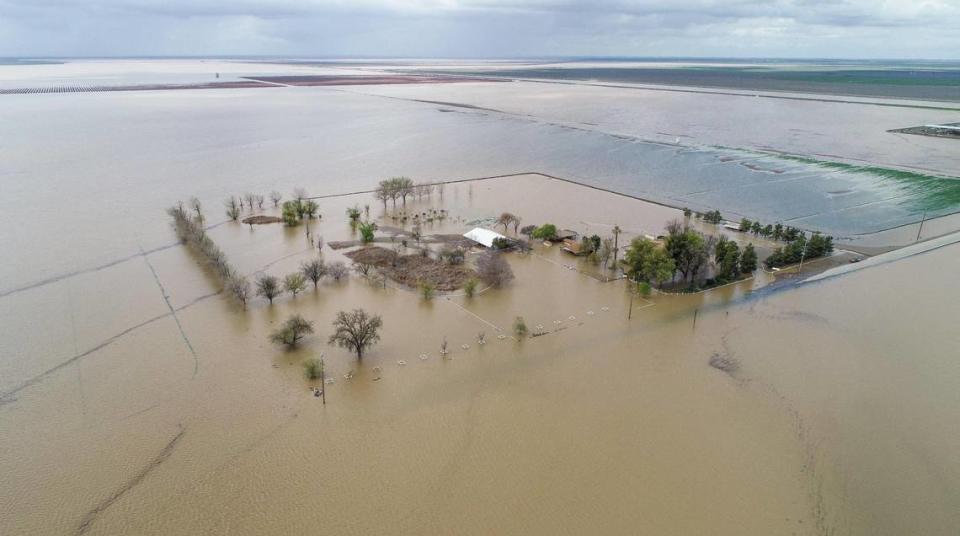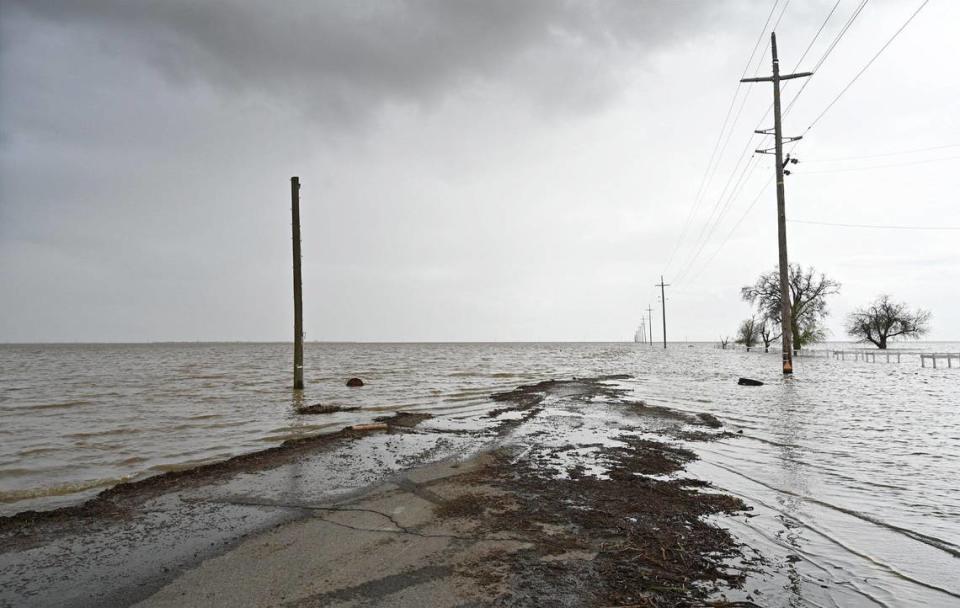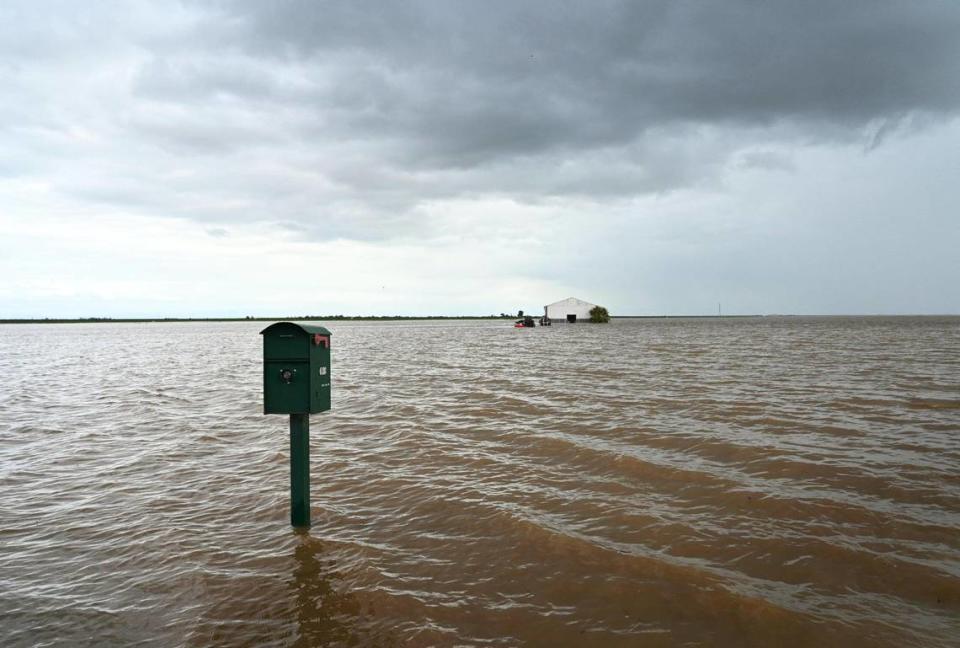How long could a refilled Tulare Lake stick around? The answer lies in the Corcoran clay
For modern-day residents of the southern San Joaquin Valley, the sight of floodwaters collecting in the former Tulare Lake basin over recent days is a jarring reminder of what happens when more rain falls than dams can contain, soil can absorb or farmers can utilize.
Several factors are conspiring to suggest that the fertile farmland of the old lake bed may remain submerged for as much as a year or longer: a record snowpack just waiting to melt with runoff flowing to the Valley floor this spring and summer; an ancient and impervious layer of soil known as the Corcoran clay that keeps water from draining effectively; and land subsidence from overpumping the underground water table, deepening the lake bed over the recent decades.
In the mid-1800s — before extensive canals were built to divert natural water flows from the Kings, Kaweah and Tule rivers and decades prior to the construction of foothill dams on those rivers — a 2007 study prepared for the U.S. Environmental Protection Agency reports that Tulare Lake was a more or less permanent feature of the Valley’s landscape, encompassing as much as 790 square miles in what is now Kings County.
While the old lake was large, reportedly the largest lake west of the Mississippi River, it was also shallow, about 37 feet deep in years such as 1853 and other high-water years.
The diversion of water from the rivers and their tributaries eventually dried Tulare Lake by 1899, but the lake has remained susceptible to periodic resurrection from floods during wet years of the 20th century and into the 21st century.
Which is another way of saying: This certainly isn’t the first time the old lake bed has flooded, and it won’t be the last. The big question is, how long will the farmland remain underwater before the lake dries up once again?
John T. Austin, a now-retired scientist with the National Park Service and author of “Floods and Droughts in the Tulare Lake Basin” — an extensive book exploring both the recent and ancient history of Tulare Lake — said that two years of floods in 1982 and 1983 resulted in a lake that didn’t fully disappear until 1985.
“There were good eyewitness accounts of being able to see the lake all the way from the Sierras,” Austin told The Fresno Bee this week. The drying-out process took about two years after the 1983 flood.
This year, “with the water coming down now, I’d guess most of it won’t be gone before next summer” in 2024, Austin added.
Tulare Lake flood will grow when Sierra Nevada snow melts
At Pine Flat Reservoir — the largest of the foothill lakes on the rivers feeding into the Tulare Lake basin — about 780,000 acre-feet of water was being held in check as of Friday. That’s about 78% of the lake’s capacity of 1 million acre-feet, and 152% of the average storage behind Pine Flat Dam for the date.
Friday’s storage figures at other dams in the southern Sierra Nevada watershed, as reported by the state Department of Water Resources, are:
Lake Kaweah, behind Terminus Dam on the Kaweah River east of Visalia: 167,218 acre-feet, 90% of the lake’s capacity of 185,000 acre-feet and almost 375% of the average storage for the date.
Lake Success, behind Schafer Dam on the Tule River east of Porterville: 67,104 acre-feet, 82% of the lake’s capacity of 82,300 acre-feet and more than 230% of the average storage for the date.
Lake Isabella, behind Isabella Dam on the Kern River northeast of Bakersfield: 360,237 acre-feet, 63% of the lake’s capacity of 568,000 acre-feet and almost 200% of the average storage for the date.
The U.S. Army Corps of Engineers, which operates the four dams, is striving to maintain a balance between minimizing the potential for downstream flooding while at the same time trying to release enough water to make room for future storms and the spring snowmelt.
What’s happening to Tulare Lake now, however, doesn’t yet include substantial runoff from the massive snowpack that has accumulated in the southern Sierra Nevada and the watersheds that feed the Kings, Kaweah and Tule rivers — a snowpack that currently contains almost three times as much water content as the benchmark April 1 average, according to the state Department of Water Resources.
If a significant early spring heat wave or warm rainstorms cause all that snow to melt quickly, the runoff would easily outpace the ability of dams on the feeder rivers to contain the water, creating the prospect of damaging floods downstream from the dams and pouring even more water into Tulare Lake.

 Yahoo Autos
Yahoo Autos 



